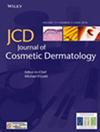Excessive lipogenesis of the skin triggers some dermatological concerns, such as enlarged pores, acne, and blackheads. Although topical drug treatments can offer temporary relief, their prolonged usage may lead to side effects of dryness, irritation, or allergic reactions. Consequently, the development of safer and efficacious ingredients in cosmetics for managing sebum overproduction represents a significant yet challenging endeavor.
Saponins were extracted from tea (Camellia sinensis) seed meal and purified by macroporous resin in order to investigate the impact of tea seed saponins (TSS) on lipid production in human immortalized sebaceous cells. Moreover, we attempted to reveal the underlying mechanism of TSS on the sebosuppression effect in SZ95 sebocytes stimulated by linoleic acid (LA).
The compositions and chemical structures of TSS were determined using UV–vis absorption spectrum, Fourier transform-infrared (FTIR) spectrum, and ultra-high-performance liquid chromatography-mass spectrometry analysis. An in vitro model of cellular lipid accumulation induced by LA was established. Total lipid synthesis in intracellular SZ95 sebocytes was assessed through Nile Red staining, while triglyceride, cholesterol, and fatty acids were quantified by commercially assay kits. Western blot and quantitative real-time polymerase chain reaction were employed to analyze the protein expression levels involved in the AMP-activated protein kinase (AMPK)/mammalian target of rapamycin (mTOR) pathway as well as the downstream protein and mRNA expressions of sterol regulatory element-binding protein-1 (SREBP-1), peroxisome proliferator-activated receptor γ (PPARγ), and fatty acid synthase (FAS). The localizations of SREBP-1 within the cytoplasm or nucleus were characterized using immunofluorescence staining.
Five saponins were identified in the extracted TSS, all of which were oleanic acid-type pentacyclic triterpenes. TSS treatment significantly alleviated LA-induced lipid accumulation in SZ95 sebocytes. In addition, TSS activated the AMPK/mTOR pathway and downregulated the downstream protein and mRNA expression of transcription factors and enzymes, including SREBP-1, PPARγ, and FAS. Moreover, the TSS blocked the nuclear transfer of SREBP-1 from cytoplasm to nucleus.
In human sebocytes, TSS exhibited sebosuppressive effect as revealed by the inhibited production of total lipids as well as triglyceride, cholesterol, and fatty acids. Moreover, the anti-lipogenesis mechanism by TSS involved the activation of the AMPK/mTOR pathway and downregulated downstream transcription factors and enzymes of SREBP-1, PPARγ, and FAS. Additionally, TSS blocked the SREBP-1 nuclear translocation. These results may justify the potent of TSS as a new candidate for modulating lipogenesis in human SZ95 sebocytes.



